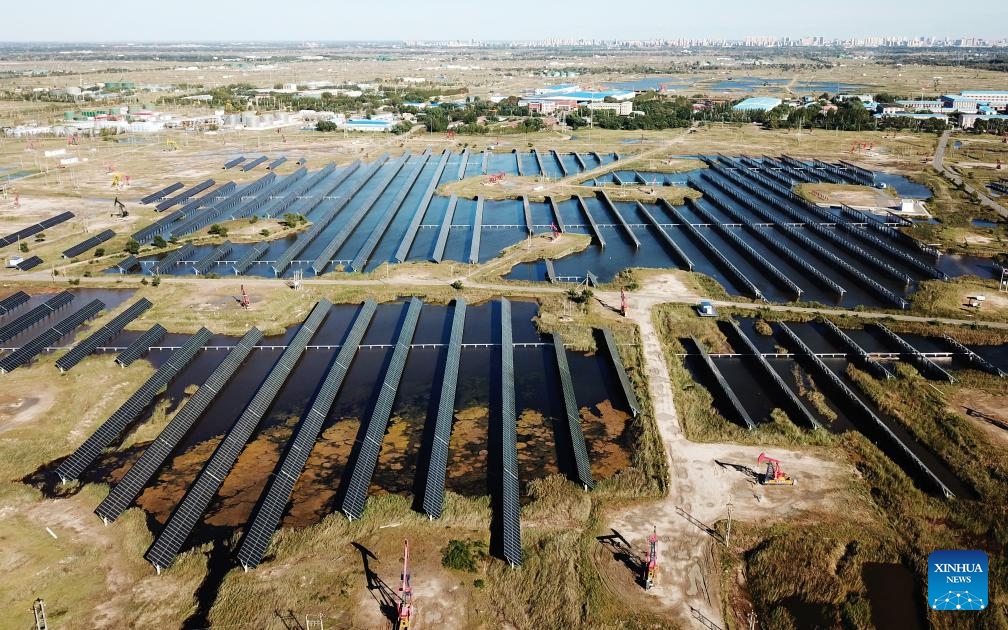
This aerial photo taken on Sept. 19, 2023 shows the Xinghuo water surface photovoltaic power station of Daqing Oilfield under PetroChina in Daqing, northeast China's Heilongjiang Province. This power station has an installed capacity of 18.73 megawatts, and its average annual electricity generation is equivalent to that produced by burning 8400 tonnes of standard coal, which in turn reduces carbon dioxide emissions by 22,000 tonnes.(Photo: Xinhua)
China’s photovoltaic (PV) industry reached new heights as the country turns to green development and renewable energy. The country’s PV power generation capacity amounted to 520 million kilowatts (kW) by the end of last month.
The country’s newly installed PV system in the first three quarters more than doubled in China compared to the same period last year, amounting to 128.94 million kW, pushing the country's PV generation capacity to 520 million kW. The country’s solar PV power generation reached 436.9 billion kilowatt-hours, an increase of 33 percent year-on-year, according to data released by the National Energy Administration (NEA).
Of all the new PV systems in China, distributed PV power systems account for a larger share, with 67.14 million kW capacity, and centralized PV power systems increased by 61.80 million kW of generation capacity.
In line with China’s green development and energy transformation, renewable energy generation is on a fast pace of development, which greatly accelerated the growth of the PV industry. Smart PV power plants and distributed PV power systems are especially popular, said Feng Chao, general manager of an energy company based in Zhengzhou, told Global Times on Monday.
The company's newly built smart distributed PV power stations can access Huawei cloud energy management platform through 5G network, which helps the plants to achieve unattended operation. The distributed power systems occupy less land and contribute to the growth of power generation, which makes them perfect solutions in urban areas, said Feng.
China's renewable energy development reached a new peak this year, with 172 million kW of new renewable energy added in the first three quarters of 2023, up 93 percent year-on-year, of which about 75 percent landed in PV power generation, NEA reported.
China is a world leader in the PV industry. As of 2022, it ranked first in PV module output, new PV added capacity, and cumulative PV added. The country remains the
largest PV systems exporter in the world, according to the China Photovoltaic Industry Association.
In order to achieve carbon peaking and carbon neutrality goals, NEA is pushing the construction of wind power and PV power bases and making every effort to accelerate the supply of clean electricity, Wang Dapeng, an official of NEA, said at a press conference.
China has an irreplaceable role to play in helping the world achieve its carbon reduction goals. The International Energy Agency expects China to “consolidate its leading position” in increasing global renewable capacity and account for about 55 percent of global renewable power capacity added in both 2023 and 2024, according to a report it released on June 1 this year.




